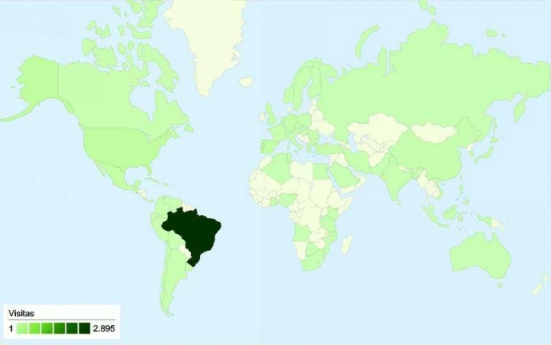Avaliação da interação de Zinco, Alumínio, Cobre e Manganês em Chromobacterium violaceum (doi:10.4136/ambi-agua.32)
Palavras-chave:
Chromobacterium violaceum, sais metálicos, interação
Resumo
Os metais traços liberados por atividades extrativistas, mineralógicas, industriais, agroindustriais e pelos resíduos urbanos acumulam-se no meio ambiente, afetando o equilíbrio dinâmico dos ecossistemas onde estão presentes, gerando não apenas um problema ambiental, mas também econômico. Com foco no potencial biotecnológico de Chromobacterium violaceum, o objetivo deste trabalho foi avaliar a resistência dessa cepa a quatro sais metálicos: sulfato de alumínio, sulfato de cobre, sulfato de manganês e sulfato de zinco, bem como um possível efeito de interação de 2a ordem, utilizando um planejamento fatorial completo 24. Para todos os sais estudados, usou-se a concentração de 100mg/L ou a ausência do sal. Em uma microplaca de cultura com 96 orifícios, foram realizados os 16 experimentos, em duplicata. Uma suspensão do microrganismo foi preparada como inóculo e diluída em Caldo Nutriente para ser adicionada aos orifícios. Após 24 horas de incubação a 37ºC, foi realizada a leitura da absorbância a 410nm em leitora de microplacas Versamax. Os resultados mostraram alta capacidade de adaptação de C. violaceum aos sais estudados. A análise dos resultados pelo teste t de Student mostrou que o Manganês foi o único metal que não teve efeito significativo sobre o crescimento de C. violaceum, enquanto o Zinco foi o mais ativo, sendo observadas interações positivas envolvendo a presença do Zinco; a interação entre Alumínio e Cobre não foi relevante.
Publicado
20/12/2007
Edição
Seção
Artigos
Autores mantêm os direitos autorais pelo seu artigo. Entretanto, repassam direitos de primeira publicação à revista Ambiente & Água - An Interdisciplinary Journal of Applied Science. Em contrapartida, a revista pode transferir os direitos autorais, incluindo direito de enviar o trabalho para outras bases de dados ou meios de publicação. A revista exerce a licença CC BY 4.0






